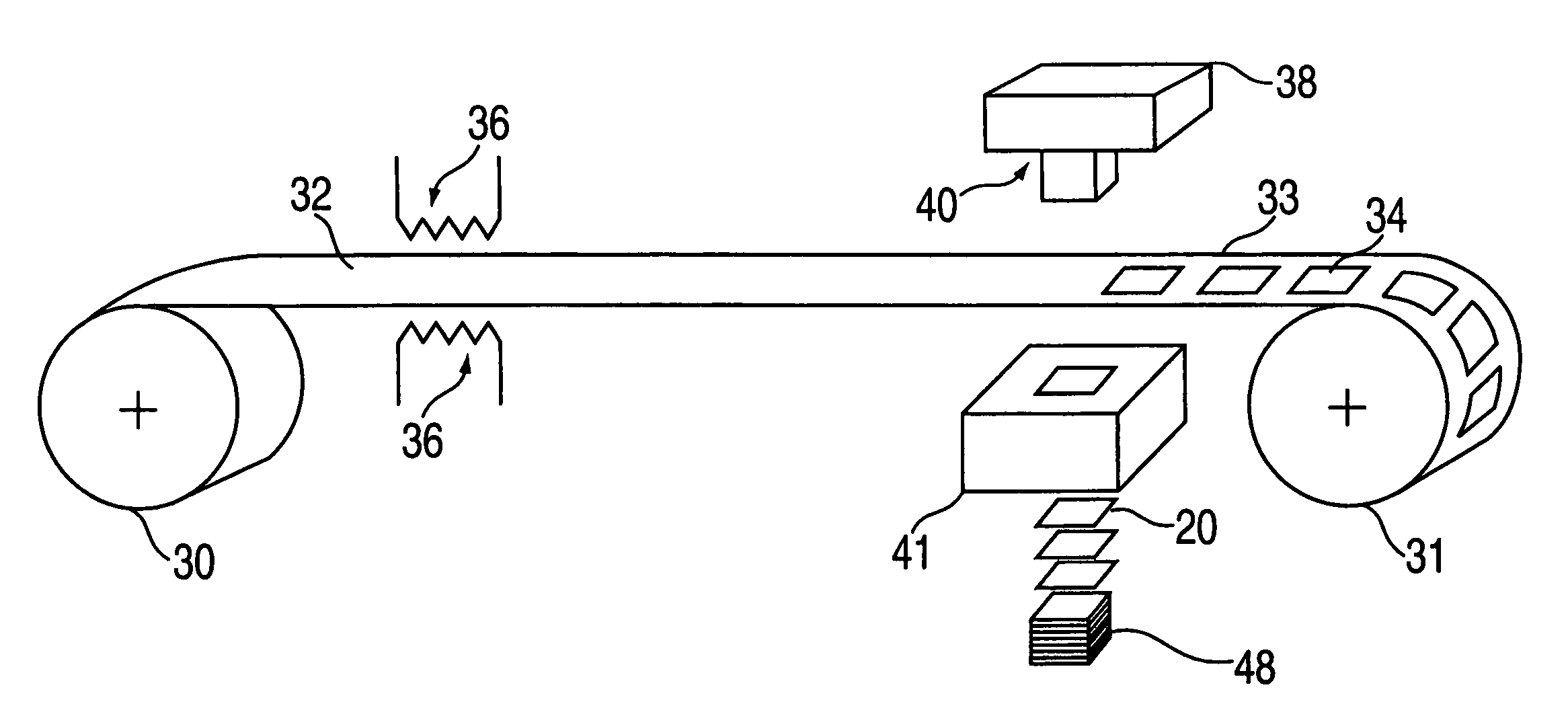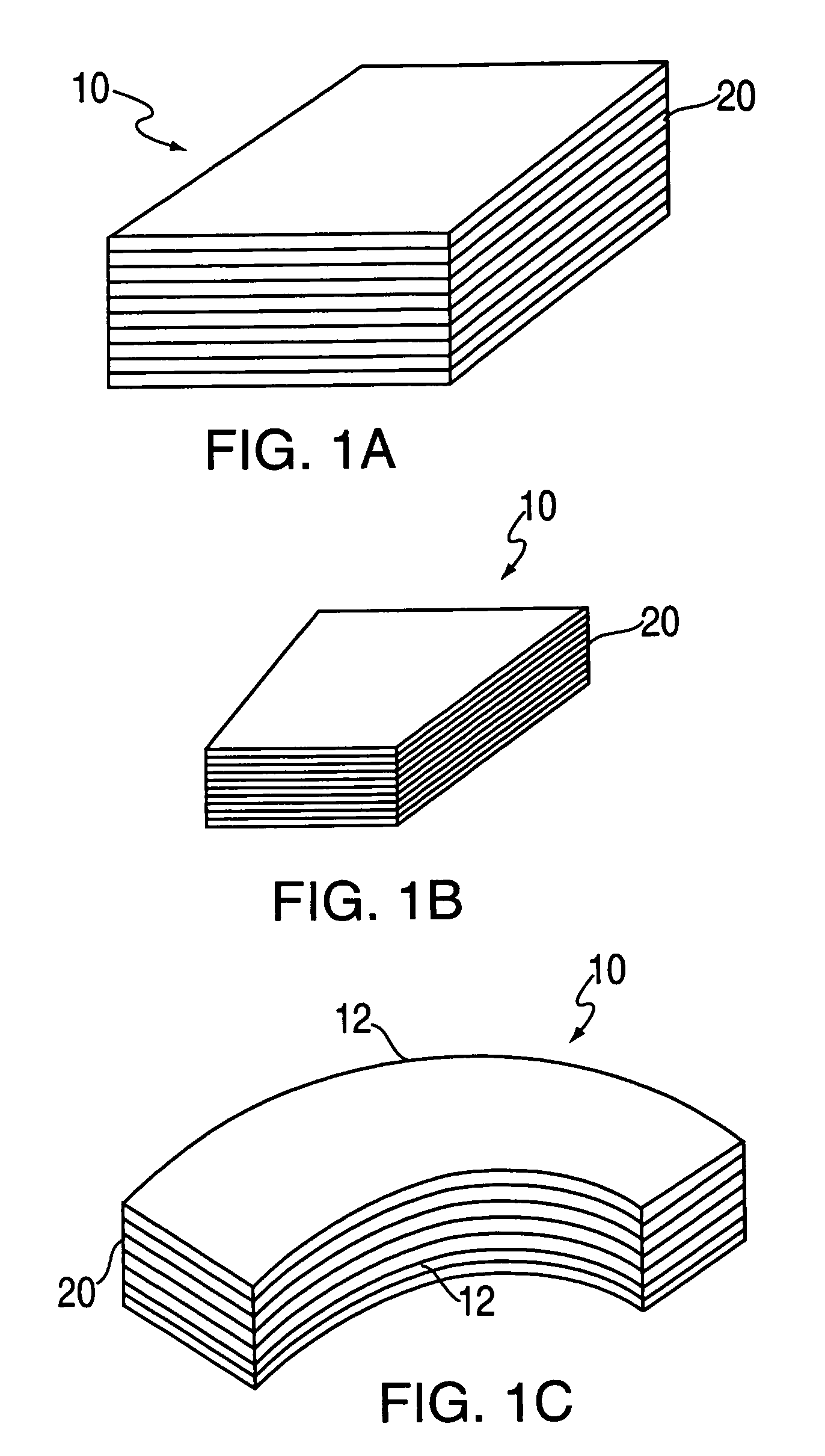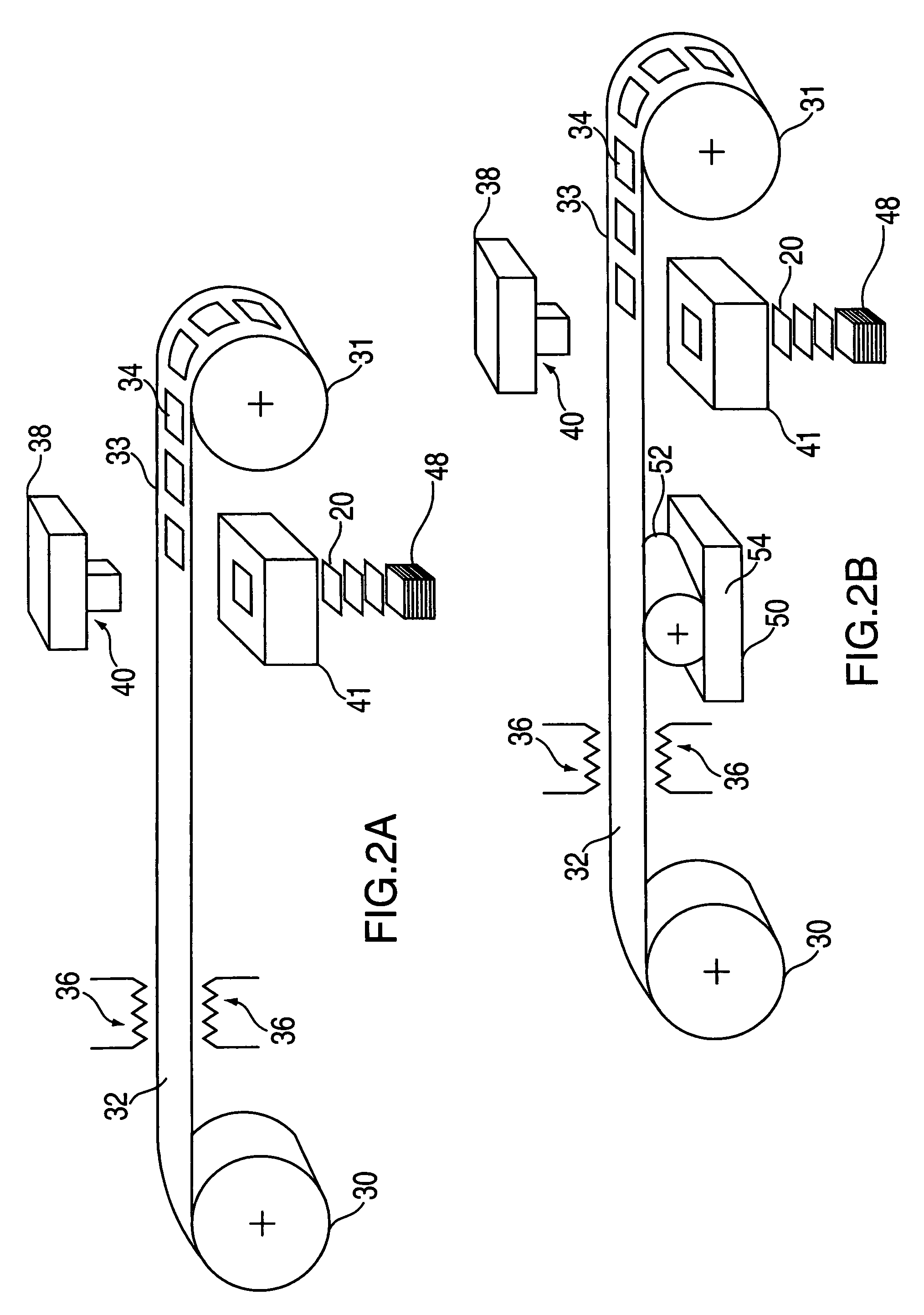Bulk stamped amorphous metal magnetic component
a magnetic component and amorphous metal technology, applied in the field of amorphous metal magnetic components, can solve the problems of long-standing consideration of unsuitability for bulk magnetic components, tooling and manufacturing costs, and the tendency of fabrication tools and dies to wear more rapidly, so as to reduce stress, reduce manufacturing time, and simplify manufacturing
- Summary
- Abstract
- Description
- Claims
- Application Information
AI Technical Summary
Benefits of technology
Problems solved by technology
Method used
Image
Examples
example 1
Preparation and Electro-Magnetic Testing of a Stamped Amorphous Metal Arcuate Component
[0066]Fe80B11Si9 ferromagnetic amorphous metal ribbon, approximately 60 mm wide and 0.022 mm thick, is stamped to form individual laminations, each having the shape of a 90° segment of an annulus 100 mm in outside diameter and 75 mm in inside diameter. Approximately 500 individual laminations are stacked and registered to form a 90° arcuate segment of a right circular cylinder having a 12.5 mm height, a 100 mm outside diameter, and a 75 mm inside diameter, as illustrated in FIG. 1c. The cylindrical segment assembly is placed in a fixture and annealed in a nitrogen atmosphere. The anneal consists of: 1) heating the assembly up to 365° C.; 2) holding the temperature at approximately 365° C. for approximately 2 hours; and, 3) cooling the assembly to ambient temperature. The cylindrical segment assembly is removed from the fixture. The cylindrical segment assembly is placed in a second fixture, vacuum...
example 2
High Frequency Electro-Magnetic Testing of a Stamped Amorphous Metal Arcuate Component
[0068]A cylindrical test assembly comprising four stamped amorphous metal arcuate components is prepared as in Example 1. Primary and secondary electrical windings are fixed to the test assembly. Electrical testing is carried out at 60, 1000, 5000, and 20,000 Hz and at various flux densities. Core loss values are compiled in Tables 1, 2, 3, and 4 below. As shown in Tables 3 and 4, the core loss is particularly low at excitation frequencies of 5000 Hz or higher. Thus, the magnetic component of the invention is especially suited for use in poleface magnets for MRI systems.
[0069]
TABLE 1Core Loss @ 60 Hz (W / kg)MaterialCrystallineCrystallineCrystallineCrystallineFe-3% SiFe-3% SiFe-3% SiFe-3% Si(25 μm)(50 μm)(175 μm)(275 μm)National-National-National-National-AmorphousArnoldArnoldArnoldArnoldFluxFe80B11Si9 MagneticsMagneticsMagneticsMagneticsDensity(22 μm)SilectronSilectronSilectronSilectron0.3 T0.100.20...
example 3
High Frequency Behavior of Low-Loss Bulk Amorphous Metal Components
[0073]The core loss data of Example 2 above are analyzed using conventional non-linear regression methods. It is determined that the core loss of a low-loss bulk amorphous metal component comprised of Fe80B11Si9 amorphous metal ribbon can be essentially defined by a function having the form
L(Bmax, f)=c1f(Bmax)n+c2fq(Bmax)m.
Suitable values of the coefficients c1 and c2 and the exponents n, m, and q are selected to define an upper bound to the magnetic losses of the bulk amorphous metal component. Table 5 recites the losses of the component in Example 2 and the losses predicted by the above formula, each measured in watts per kilogram. The predicted losses as a function of f (Hz) and Bmax (Tesla) are calculated using the coefficients c1=0.0074 and c2=0.000282 and the exponents n=1.3, m=2.4, and q=1.5. The loss of the bulk amorphous metal component of Example 2 is less than the corresponding loss predicted by the formul...
PUM
 Login to View More
Login to View More Abstract
Description
Claims
Application Information
 Login to View More
Login to View More - R&D
- Intellectual Property
- Life Sciences
- Materials
- Tech Scout
- Unparalleled Data Quality
- Higher Quality Content
- 60% Fewer Hallucinations
Browse by: Latest US Patents, China's latest patents, Technical Efficacy Thesaurus, Application Domain, Technology Topic, Popular Technical Reports.
© 2025 PatSnap. All rights reserved.Legal|Privacy policy|Modern Slavery Act Transparency Statement|Sitemap|About US| Contact US: help@patsnap.com



